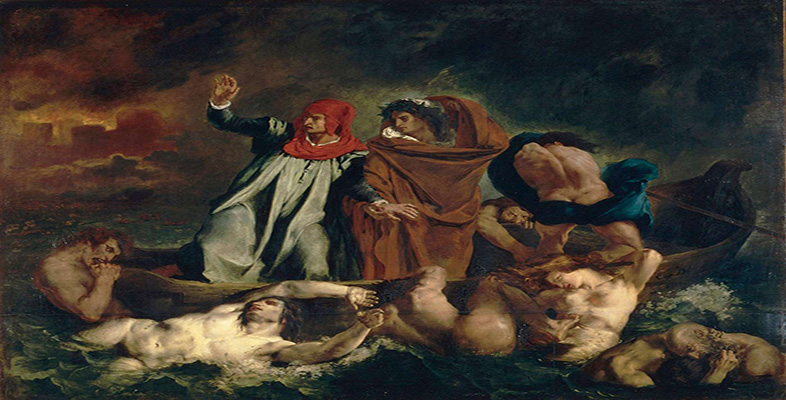3.7 Massacres of Chios – a critical stir
Chauvin viewed both Delacroix’s subject and his technique as barbaric: the painting dealt with no eternal truths and delivered no inspiring lesson. Other complaints were voiced about the rough brushwork that called attention to itself in such a non-academic manner. The ‘cadaverous tint’ of the bodies also drew criticism. Gros, whose own compositional experiments had inspired Delacroix, allegedly called the picture the ‘massacre of painting’ (quoted in Johnson, 1981, p.87), while Stendhal, aware of the influence of Gros and (probably) disappointed by the lack of overt heroism in the work, said the ‘massacre’ was more like a ‘plague’ (quoted in Wright, 2001, p.32) – in Delacroix’s painting, the red-rimmed eyes of the old woman are derived from Gros’s Bonaparte Visiting the Plague-Stricken of Jaffa (see Plate 21). However, the use of colour in Delacroix’s work is again adventurous and reflects the influence of Rubens. There are coloured shadows (for example in the shadow cast by the old woman’s wide sleeve) and a striking balancing of complementary reds and greens, blues and yellows. This use of complementaries to generate colour interest and contrast was taken to new lengths by Delacroix. The general colour key of the landscape, however, is light and fresh, influenced by Constable and Bonington. Before the Salon opened, and having just seen some paintings by Constable destined for the same exhibition, Delacroix retouched his painting using fine brushstrokes, additional glazes, highlights and varnish to make the surface sparkle. Some commentators found the colours too bright and clashing. Although certain artists, such as Gérard and Girodet, did admire the painting, it created the kind of furore that was by now associated by conservative critics with attention-seeking Romantics. The choice of a contemporary, topical subject raised similar suspicions: in the academic classical tradition, subjects were usually drawn from a literary, mythological or historical past that could be viewed from a safe distance. The fact, however, that the government awarded Delacroix a medal and subsequently bought the painting shows that it was capable of occasional liberal and innovative insight. The picture had caused a stir and the artist was seen as a rising star, irrespective of the carping criticism he attracted. Government medals provided a means of acknowledging, rather than approving, an artist’s achievement.
Click to see Plate 21: Gros’s Bonaparte Visiting the Plague-Stricken of Jaffa [Tip: hold Ctrl and click a link to open it in a new tab. (Hide tip)]
